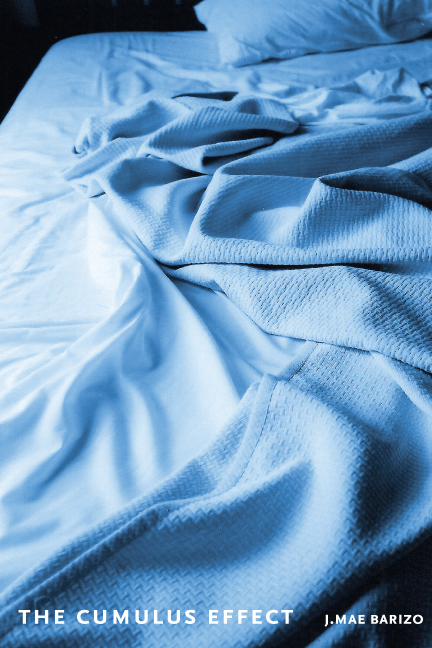
paper • 84 pages • 15.95
ISBN-13: 978-1-935536-64-2
The sequential poems in The Cumulus Effect map how the intersections between geography, memory, and desire weave personal, unavoidable history. The book’s structure alludes to “method of loci” or “memory palace,” the ancient mnemonic technique of spatial memorization. Minimalist, but insistently mercurial, the poems move through American and European cities: seduction in an Neoclassical palace in Saint Petersburg; a “hindsight of blood” in New York City; late-summer longing in Berlin’s Senefelder Platz. Like the erratic sky of the book’s title poem, these verses are laced with an uncanny delicacy; The Cumulus Effect sets on the page a prismatic and complex topography of the body forever en route.
Excerpt from “Berlin”, from The Cumulus Effect:
Wire mesh, poplar, that strange dance.
Body by which to bend must move so
delicately like a dull minuet. And you
were magnetic field, voltage against
the eye of sun and bones that grated
one against the other. O motor
of my limbs, coiling through
the monotone days. How young then,
guarding me against every ruinous thing.
The Cumulus Effect haunts, surprises, and fascinates the reader; as if looking at shape-shifting clouds, always in transition, we watch how the poet’s mind travels, as the past travels through it. There is absence here, and violence; memories like wounds in these reflections of a bravely summoning soul gradually moving to release the past: ‘and let us love warily, remembering nothing’ –said so humanly, in the necessary midst of remembering.
These exquisite poems display throughout a mastery of poetic form and a thoroughly professional command of surface and tone. It is clear we are in the hands of a highly cultivated, intelligent writer. For poems as eloquent as these, there is a curious preoccupation with the ‘unsaid.’ I had the sense that the poet was torn between a very elegant, elliptical manner, perhaps derived from Ashbery and a much more down-to-earth, nitty-gritty persona that might like to take the gloves off and convey something more bloodily explicit, a la Akhmatova or Louise Glück. The variety of poetic stanzas and shapes, all convincingly orchestrated, showed that J. Mae Barizo knows exactly what she is doing. Hats off to her.
These peripatetic poems draw us into a sensually haunted consciousness that moves between New York, Berlin, Saint Petersburg, Afrika, and ‘The time zone the dream was in / continual comings and goings.’ The Cumulus Effect is a meditation on memory, wounding, separation, distance, yearning, and the spirit of place. It makes arresting use of fragment, echo, quiet, precise intensity. Like Rilke, the speaker in these poems is gifted / afflicted by a hyper acute sensitivity to the world. As a poet, J. Mae Barizo is an eternal wanderer whose exquisite, aesthetically evolved perceptions are uncanny and transporting.
…With this case study in memory, this catalogue of forgetting, Barizo provides a gentle reminder of the necessity of our capacity to dream, of mindfulness that perhaps daylight is merely an “imaginary opening” into the mind. Read the full review.